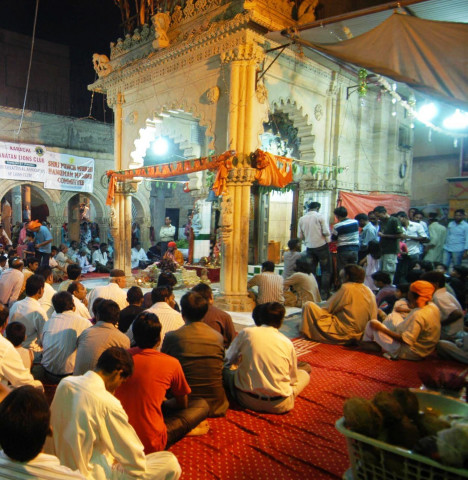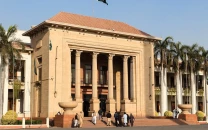Govt plans to restore seven temples in Pindi
Project made part of Sujan Singh Haveli renovation

The Rawalpindi administration has decided to include seven small temples located within a kilometre of Sujan Singh Haveli in the restoration project of the old city area.
The restoration of the temples was discussed in a meeting held to review the projects of Sujan Singh Haveli and Bhabhra Food Street at Rawalpindi Metropolitan Corporation on Sunday.
Rawalpindi Commissioner Muhammad Mahmood said that all the seven temples would be included in the project concept (PC) I of the Sujan Singh Haveli project.
All temples would be restored and information about their historical status will be displayed in a prominent place. The commissioner said that eight historic buildings in the proximity of Sujan Singh Haveli have also been identified and their facades would be restored to antiquity.
Read Islamabad Hindu temple issue lands in CII
However, he added that the inclusion would increase the cost of the Sujan Singh Haveli restoration project by Rs6 million.
Mehmood said a UNDP survey has revealed that some houses in the surroundings were already kept in their original conditions by the residents and they have antique furniture too.
Further, the commissioner said that they would not use tiles in the footpaths of Bhabra Food Street, they would use old-style bricks while the designs of the lights would also be kept antique.
He said that classic-era benches would be set up in Food Street and old design dustbins would be placed between them.
Sikh era relic
One of the last remaining reminders of the bustling Sikh reign over Rawalpindi, Sardar Rai Bahadur Sujan Singh’s over a century old mansion, is slowly crumbling away.
Once a sign of a new, rising power in the heart of Punjab, this crucial piece of history lies in a dilapidated state even though the Rawalpindi commissioner took special interest and there had been talk as recent as a month ago of restoring the structure and even housing an educational research institute there.
Even as the Sikh era petered out and they lost their grip over Punjab after the meteoric reign of Raja Ranjit Singh, well-known businessman, timber baron and political figure Sardar Rai Bahadur Sujan Singh in 1890 announced to construct a mansion at the Syed Puri Gate of Rawalpindi - an area once the melting pot for a multi-religious Rawalpindi, bustling with temples, mosques and gurdwaras.
Sprawling over 24,000 square feet, the project was completed in an eye-watering three years. Historians say that the doors and windows of the mansion were specially imported from Britain at that time. The mansion also made extensive use of iron to reinforce its doors and windows which sported intricate grillwork.
This was so that the house could withstand an assault from any enemy. A lot of precious wood was also used, both on the inside of the mansion and on its facade.
The 45-room mansion was then handed over to a Sikh general as his residential quarters. Two of the four storeys of the mansion were used by the general’s staff and bodyguards. The upper two floors were reserved for the general and his family.
Published in The Express Tribune, January 18th, 2021.



















COMMENTS
Comments are moderated and generally will be posted if they are on-topic and not abusive.
For more information, please see our Comments FAQ